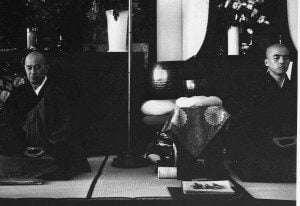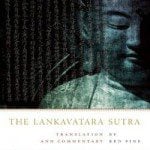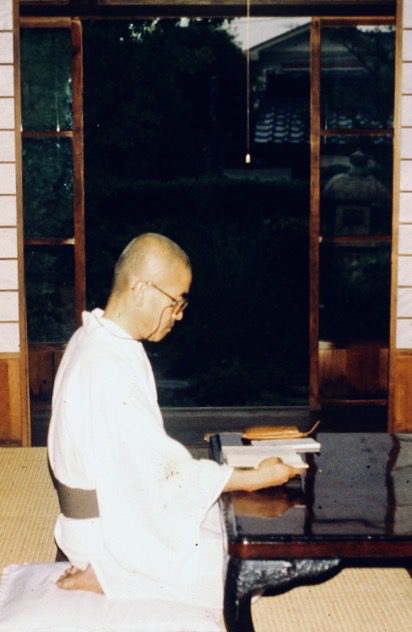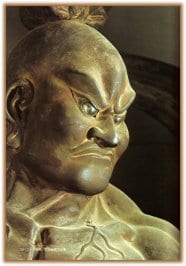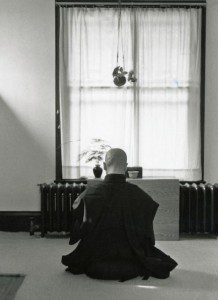I found the above photo with an image search – a young Katagiri Roshi (right) and an old Suzuki Roshi (left). Click to enlarge the image and you’ll see the Katagiri-fierce-zazen-face that he upheld throughout his life. Maybe he softened toward the end just a little bit.
So I’m back from Rohatsu Sesshin at Boundless Way and one of the (little) striking things about the sesshin was looking around the room during a dharma talk and realizing that very few of the practitioners had studied with a Japanese teacher.
I studied with Katagiri Roshi for thirteen years, ignoring his advise not to stick my nose into Zen Buddhism – it will be trouble, he said, and it isn’t easy to pull out your nose.
Now days I really appreciate the old forms of practice (especially when simplified – sitting, standing, walking, lying down according to the training rules) and so recently became inexplicably happy when Practices at a Zen Monastery: Clothing, Eating, Housing: Being in Harmony with the Dharma by Tsugen Narasaki Roshi arrived in the mail.
Although I struggled a lot with Katagiri’s style of traditional Soto Zen practice, somehow it won the fight years ago.
I think the old ways are important for many reasons – including that they offer the opportunity of setting aside our ideas of practice and just enter the form, express it from the inside, and see the meaning in the doing.
Some folks think that Soto Zen form is an obsessive-complusive-disorder practice. I’ve seen it practiced in an OCD-way but that’s a near enemy of it, not the heart of it.
Others think it is a cargo cult (in this context, if we pretend to be Buddha we’ll magically get the goods). Some do practice in this way, but again, it really isn’t the heart of practice.
The heart of the practice is actualizing the fundamental point, the genjokoan, a close kin (very close, imv) to the sound of the single hand in koan Zen. Bowing, sitting, standing in this way is to allow the treasure store to open of itself and to joyfully put it to use (to paraphrase Dogen).
May these old forms hang around for a while so that they might more fully contribute to the peace and harmony of the future world.

